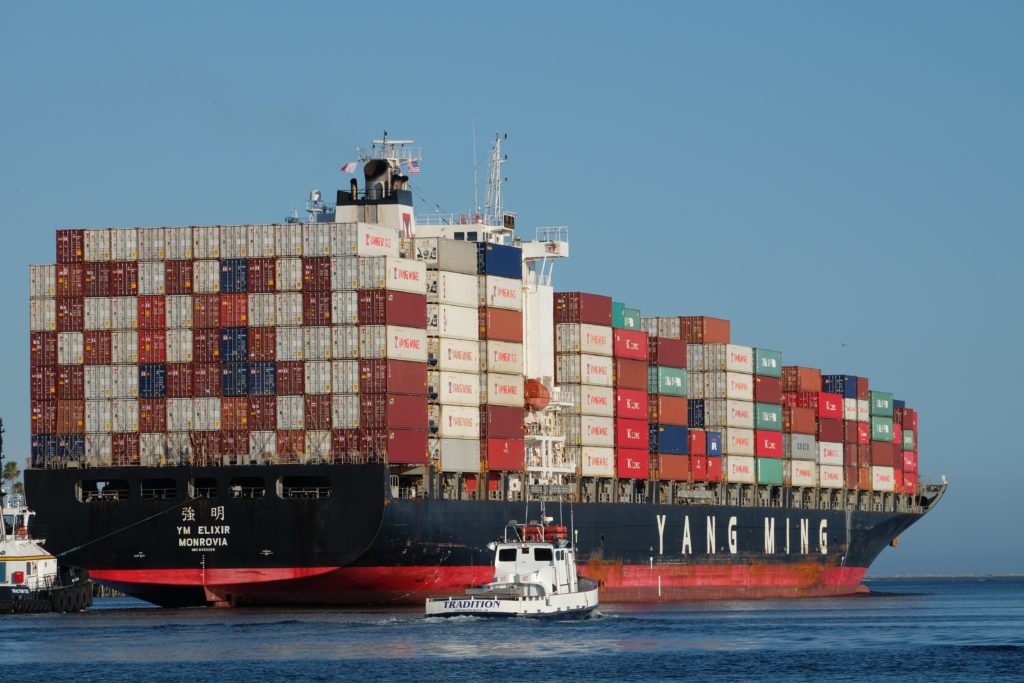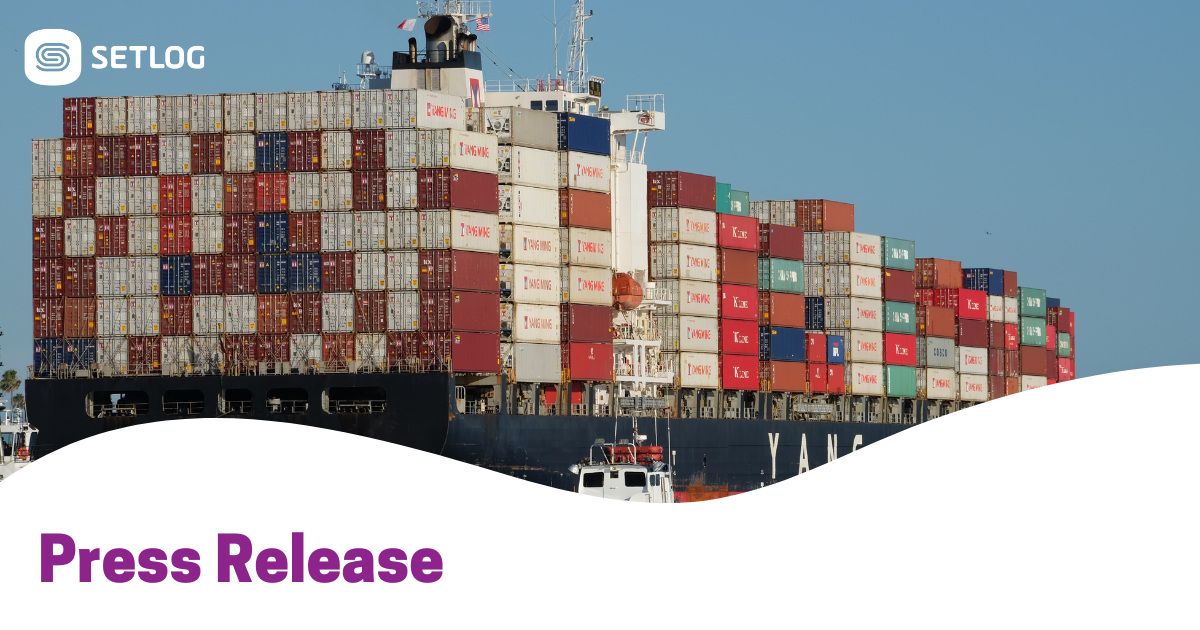• Setlog experts see no easing until Chinese New Year 2022.
• Container prices from China to Europe crack the 20,000 US dollar mark.
• Some traders announce price increases.

sea freight between China and Europe for months. (Photo: Diego Fernandez / unsplash)
(Bochum, 24.08.2021). The festive season will be spoiled for importers of consumer goods from Asia this year: The reasons are a lack of freight capacities and exploding transport costs for goods from the Far East. According to analyses by the Bochum-based software company Setlog, the situation will not change until well after Christmas. The supply chain management experts forecast delivery delays, capacity bottlenecks and freight rates at a very high level until at least the Chinese New Year (end of January). The situation is expected to ease somewhat by Easter 2022 at the earliest, the experts stress. Setlog backs up its forecasts with figures. For analysis, the company evaluated data from around 100 brands using Setlog’s SCM software OSCA from July 2019 to July 2021.
A mix of causes has kept global freight traffic working at its breaking point for months. On the one hand, the Corona pandemic shook up global supply chains and caused warehouses to overflow because of closed stores. On the other hand, there was increased demand from some industries and importers. Shipowners, meanwhile, ramped down capacity to keep prices high. “Although new ships and containers have been ordered, it takes months to put them into circulation,” emphasized Ralf Duester, board member of Setlog. Exacerbating the situation is the fact that there has been an export boom in Asia, which is additionally driving demand for spare transport capacity. “Unpredictable events such as the Ever Given accident in the Suez Canal, the closure of the port of Yantian or, more recently, the partial closure of the port in Ningbo make the situationeven worse,” Duester said.
So far, the peak of the price explosion in sea freight from China to Europe was recently the transport of a 40-foot high cube container for which $20,000 was paid. In July, prices for containers from China to Western Europe hovered between 14,000 and 16,000 US dollars. Depending on the relation, shipping company and loop, this corresponds to six to eight times when compared to prepandemic prices. For shipping Christmas items from Asia by sea, Setlog forecasts six to eight times the price compared to 2019 levels, depending on the country of production.
However, high rates in sea freight do not guarantee on-time deliveries. On average, goods were eight days longer in transit from Asia than before the pandemic. Setlog calculated that sea container transport takes up to 42 days. Causes include canceled voyages (blank sailings), slow ships and delayed unloading at ports of destination. The data also shows: importers from the apparel industry reduced volume between 25 and 35 percent compared to the 2019 analysis period, depending on the item, due to the pandemic situation.
Volume decreases also occurred in air freight. For example, this transport segment accounted for only seven percent of the companies analyzed – compared to 23 percent in 2019. The pandemic was also the main reason for this: textiles and light consumer goods that are flown were stocked in overflowing warehouses – and volumes reduced slowly.
Because rail transport also reached its capacity limits, capacity bottlenecks also occurred in this mode of transport. Goods are currently being cleared in China and at the various customs crossings, in some cases with extreme delays. Therefore, delays of up to two weeks are currently possible. Setlog observes that bookings are currently made four to six weeks before the train’s departure date.
Whether early reservations, quick rebookings or cancellations: In order to be able to manage their supply chain digitally, more and more customers are currently showing interest in Setlog’s SCM software OSCA. Dr. Christian Freckem, Deputy CEO of Europe’s largest fashion service provider Katag, says: “Global supply chains can be disrupted at any time. Those who can communicate with all supply chain partners via central SCM software in the event of incidents have a major advantage over those who resolve all changes by e-mail or telephone.”
Some companies have already reacted to the tense situation in global freight traffic. The heads of KiK and Rossmann predicted at the beginning of July that price increases would be coming in the retail sector. And economic experts are currently no longer ruling out the possibility that the inflation rate could temporarily rise to four percent.
Contact
Nora Breuker, Digital Marketing Strategist
Setlog GmbH, Alleestraße 80, 44793 Bochum, Germany T +49 234 720 285 78, n.breuker@setlog.com, setlog.com
Contact impact media projects:
Thilo Jörgl, impact media projects GmbH, Eckherstraße 10b, 85737 Ismaning
T +49 89 215384612, thilo.joergl@impact.mp, impact.mp
About Setlog
Setlog Holding is a provider of customized supply chain management (SCM) solutions. The central product is the cloud-based software OSCA with the solutions Procurement, SRM, Global Logistics, CSR and Quality Control. OSCA, which stands for “Online Supply Chain Accelerator”, is used by more than 150 brands in the apparel, electronics, food, consumer goods and hardware sectors. With the help of OSCA, companies network with their customers, suppliers and service providers to optimally coordinate their supply chain, accelerate processes and efficiently managesupply chains.
Setlog GmbH is a wholly owned subsidiary of Setlog Holding AG. The company was founded in 2001 and is today one of the leading providers of SCM software with over 40,000 users in 92 countries. The software house employs 60 people at its locations in Bochum (headquarters), Cologne and New York. www.setlog.com
